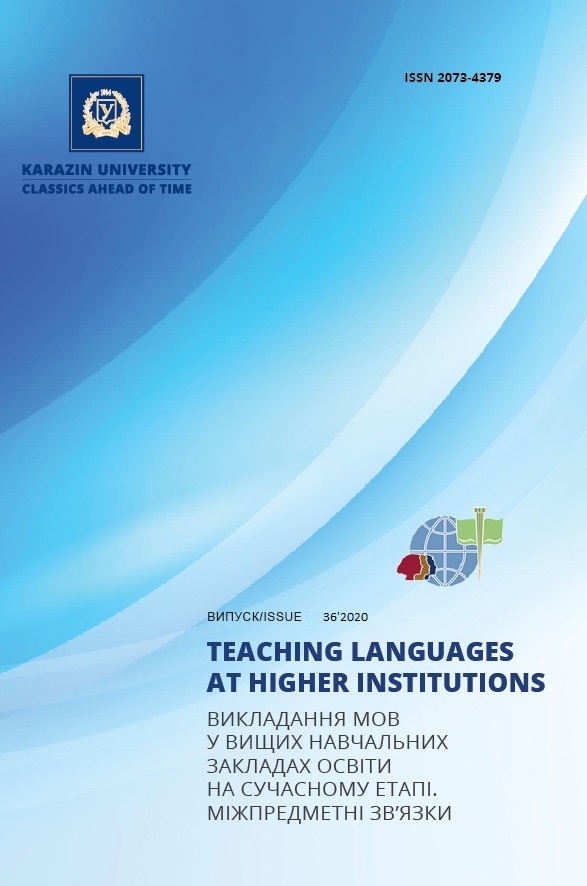Pedagogical grammar as the framework of tefl research. Part 8. Foreign language syntax acquisition: wh-questions
Abstract
The paper presents the results of the experimental data analysis concerning the said issue. Within a long observation period, the author researched three groups of subjects of various ages and backgrounds, using varied types of elicitation procedures (scrambled sentence technique, question reconstruction, oral interviews and translation). It was established that at the initial stage of foreign language acquisition (FLA), adults progress faster than children in the native language acquisition (NLA), which the author explains by their larger intellectual resources. In relation to wh-questions, the procedures common to both the NLA and FLA include the use of formulaic expressions, overgeneralization, archi-forms, and alternating forms (be instead of do, do / does / did instead of be, does instead of did, did instead of do, mixed use of several operators together), double auxiliary marking, double marking (mostly with irregular verbs in the Past Simple and considered a lexical retrieval error rather than reflecting any underlying grammar rule). Basing upon a high degree of the data resemblance in both the NLA and FLA, the author concludes that the wh-questions acquisition is a rule-governed procedure having a substantial degree of similarity in the said processes, irrespective of the fact, whether English is learned as a native or a foreign language. The difference between the NLA and FLA seems to be in the acquisition of there is / are structures. They have never been reported as a separate acquisition problem in the NLA. However, they seem to present a special difficulty in the FLA. It was found that such structures might be a problem even after the learners had mastered the do-inversion, which is considered the final stage in the NLA. In the FLA, however, the learners continued to use the first-stage structures even at the do-stage of wh-question acquisition. That might be explained by the learners’ intuitive unwillingness to accept there as the subject of the sentence, which results in their frequent omission of it during the wh-movement.
Downloads
References
Ambridge, B., Rowland, C., Theakston, A. and Tomasello, M. (2006). Comparing different accounts of inversion errors in children’s non-subject wh-questions: What experimental data can tell us? Journal of Child Language, 33 (1), pp. 519–557 [in English].
Argyri, E. and Sorace, A. (2007). Crosslinguistic influence and language dominance in older bilingual children. Bilingualism: Language and Cognition, 10, pp. 77–99 [in English].
Chernovaty, L. (1999). Osnovy teorii pedagogicheskoi grammatiki inostrannogo yazyka [The Basics of the Foreign Language Pedagogical Grammar Theory]. Doctor of Sciences thesis. Kharkiv: V.N. Karazin Kharkiv National University [in Russian].
Chernovaty, L. (2018). Pedagogical grammar as the framework of research in teaching foreign languages. Part 6. Native language syntax acquisition: yes-no- and why-questions. Vykladannia mov u vyshchykh navchalnykh zakladakh osvity na suchasnomu etapi. Mizhpredmetni zviazky [Teaching Languages at Higher Institutions]. Kharkiv: V.N. Karazin Kharkiv National University, 34, pp. 246–257 [in English]. DOI: https://doi.org/ 10.26565/2073-4379-2017-30-18.
Contemori, C., Carlson, M. and Marinis, T. (2018). On-line processing of English which-questions by children and adults: a visual world paradigm study. Journal of Child Language, 45 (2), pp. 415–441 [in English].
Ereich, A., Valian, V. and Winzermer, J. (1980). Aspects of a theory of language acquisition. Journal of Child Language, 2, pp. 157–179 [in English].
Martsos, M. and Kuczaj, S.A. (1978). Against the transformational account: a simpler analysis of auxiliary overmarkings. Journal of Child Language, 5, pp. 337–345 [in English].
Pozzan, L. and Quirk, E. (2014). Second language acquisition of English questions: An elicited production study. Applied Psycholinguistics, 35 (6), pp. 1055–1086 [in English].
Roesch, A.D. and Chondrogianni, V. (2016). “Which mouse kissed the frog?” Effects of age of onset, length of exposure, and knowledge of case marking on the comprehension of wh-questions in German-speaking simultaneous and early sequential bilingual children. Journal of Child Language, 43 (3), pp. 635–661 [in English].
Valian, V. and Casey, L. (2003). Young children’s acquisition of wh-questions: the role of structured input. Journal of Child Language, 30 (1), pp. 117–143 [in English].

